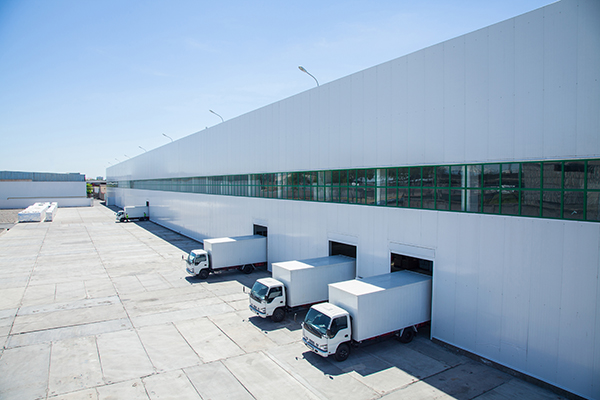CBRE report examines impact of the pandemic on big box industrial real estate market
Driven by the COVID-19 pandemic bringing about a significant, and perhaps permanent, shift in e-commerce activity, the “big box” building sector emerged as a prime beneficiary of this shift, as occupiers moved into these buildings “to serve a rapidly growing online consumer base and increase their safety stock to avoid inventory disruptions that plagued the last year,” according to a recent report issued by Los Angeles-based industrial real estate firm CBRE.
The report, entitled, “Industrial Big Box Review & Outlook Report,” defines an industrial big box facility as a warehouse/distribution center of 200,000 square-feet or more, adding that all types of occupiers upped their big box presence over the last year for various reasons, including serving growing populations, being in close proximity to expanding logistics hubs, and to take advantage of new government incentive programs.
What’s more, CBRE highlighted how e-commerce retailers inked a new record amount of big box facility deals, with 3PLs expanding in logistics hub markets, in order to better serve growing customer bases, which, in turn, led to robust absorption of space, higher taking rent, and lower direct vacancy rates for big box product (despite a large amount of new development), with all of these factors leading to record low industrial cap rates.
For 2020, CBRE’s data indicated that industrial real estate transactions saw annual across the board gains, for all big box segments it tracks, including: 200,000-to-499,000 SF, from 150.6 to 158.8; 500,000 SF-to-749,999 SF, from 50.5 to 90.0; 750,000+SF, from 78.9 to 100.8, with the total number of transactions rising from 280.0 in 2019 to 349.3 in 2020.
Not surprisingly, 3PL’s slotted highest for 2020 North American occupier transaction market share, at 25.8%. Rounding out the top five were e-commerce only, at 27.1%, general retail & wholesale, at 24.7%, food & beverage, at 9.7%, and automobiles, tires & parts, at 3.9%.
As for direct vacancy rates, the report found that the 200,000-to-499,000 SF segment saw the rate go from 5.0% in 2019 to 4.4% in 2020, with the 500,000 SF-to-749,999 SF segment going from 5.9% to 5.2% for the same period. And the 750,000+SF segment went from 5.1% to 4.5%, with the cumulative direct vacancy rate going from 5.2% in 2019 to 4.6% in 2020.
Looking at 2020 transaction volume by markets, for big box facilities, CBRE reported that the Inland Empire led the way, at 42.5 million SF, followed by Southern NJ/Eastern PA, a 41.8 million SF, Chicago, at 41.1 million SF, Dallas/Ft. Worth, at 34.9 million SF, and Atlanta, at 30.6 million SF. And the top five markets for 2020 direct vacancy rates were Toronto, at 0.3%, Montreal, at 1.1%, Northern/Central NJ, at 1.3%, Seattle, at 2.0%, and Los Angeles County, at 2.3%.
“The North American industrial real estate market had an exceptional year in the face of a global pandemic,” said James Breeze CBRE Senior Director, Global Head of Industrial & Logistics Research, on a call hosted by CBRE. “After the initial shock and shutdowns because of [the pandemic], the industrial real estate sector really thrived, due to the rapid shift in consumers buying products online. This shift to online has been happening for a while, with consecutive years of positive net absorption, massive new development, and record-braking rental rates and low vacancy rates. It accelerated significantly in 2020.
John Morris, CBRE Executive Managing Director, Americas Industrial & Logistics & Retail Leader, said on the call that the strong 2020 output relates to three concurrent trends that accelerated over the course of the year.
“The first one clearly is the e-commerce effect…driven by our demands to get what we want as soon as we can from wherever we want to buy it,” he said. “The has become an expectation accelerated by Covid, and the Covid effect on e-commerce growth, with e-commerce growing as much over two quarters mid-year [in 2020] as it grew in the 10 years prior. With this nascent surge, more inventory was needed to fill those orders, and as we saw those stocked out shelves, we knew there had to be more safety stock in those DCs so we could be sure there were more goods on those shelves.”
Another trend he cited was related to what he called the “HD TV” effect, which also related to food consumption, as grocery stores, quick service restaurants, and new formats and new restaurant types emerged over the course of the pandemic, which required both new space and also new types of space, including temperature-controlled locations. And he also pointed to the ongoing trend of homeowners doing more in and with their homes, in terms of investing in them more and taking on more home projects.













